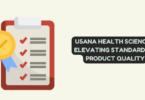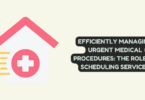
How to Use Payment Reconciliation Processes to Keep Your Company’s Books in Order
Financial record-keeping is one of the most crucial aspects of running and growing a business. Whether you’re launching a bootstrapped online store, in high growth mode as a late-stage startup, running a legacy enterprise, or even just getting started as a franchisee, maintaining accurate records of all financial transactions is crucial.
It paints a clear picture of your company’s performance, growth, and viability over a given period. It also puts you in position to efficiently ensure that all billings are received and that your tax reporting is compliant.
But how do you ensure your organization’s financial records are correct and up-to-date? One effective technique is to use a process that makes it simple to reconcile payments. This ensures that your company’s internal financial records are in perfect harmony with statements from banks, credit card companies, and other financial institutions.
In this article, we’ll dig deeper into how payment reconciliation works and outline a few best practices to maintain your company’s financial records. Let’s get started.
Payment Reconciliation: How It Works
Typically, every business transaction is supported by at least two forms of documentation. On the one hand, there’s the proof of purchase (in the case of vendor payments) or the amount due (in the case of customer payments). On the other hand, there’s an external record, such as a bank or credit card statement.
Payment reconciliation compares the amounts in internal and external records and ensures they match. If there’s a discrepancy, an accountant is responsible for investigating and identifying its cause.
Payment reconciliation is usually categorized into the following types:
- Bank reconciliation
- Credit card reconciliation
- Cash reconciliation
- Digital wallet reconciliation
But how do you reconcile payments and ensure they’re recorded correctly throughout the accounting system? Here’s an overview of the process.
Record Retrieval
The first step involves collecting all internal records and external statements you’ll need to reconcile payments. You also need to identify the specific information, such as date or payment method, you’ll need to compare transactions.
Comparison
Next, you have to compare each recorded transaction with bank statements, credit card statements, and other external records. If the amounts match, the transaction is marked as complete. In case of a discrepancy, the transaction moves to the next stage.
Reconciliation
This is the stage where an accounting team investigates a suspicious or misaligned transaction to identify the cause of the discrepancy. Then, they take the necessary steps to resolve the issue.
Recording
Once all transactions are checked and discrepancies are resolved, the accounting team adds them to your company’s general ledger.
Why Are Payment Reconciliation Processes Important?
When implemented properly, payment reconciliation provides an accurate and detailed overview of your company’s financial records. That, in turn, offers several benefits. It becomes easier to identify issues, such as incorrect invoice amounts and unpaid invoices.
You can prevent revenue leakage due to late payment fees or incorrect transactions. You can also spot duplicate or suspicious payments and eliminate the risk of fraudulent transactions. It’s crucial, considering that 35% of businesses in the US and 39% of businesses in the UK fell prey to financial fraud in 2023.
Additionally, payment reconciliation processes can also establish an audit trail of transactions and help you stay compliant with local, state, and federal tax regulations. You can even identify invoices customers haven’t paid and send them timely reminders before their payments are overdue. This can make all the difference in building lasting customer relationships, as well as ensuring healthy cash flow.
On a strategic management level, when your books are properly reconciled, it’s easier to gain deeper insight into business expenses and make more calculated budgeting decisions, because you know you can trust your data. Similarly, you can accurately forecast your revenue over a given period and take the necessary steps to grow your business further.
Payment Reconciliation Best Practices for Efficient Financial Record-Keeping
Payment reconciliation provides you with complete visibility into your company’s financial health. However, the process isn’t as simple as manually comparing transactions between a general ledger and a bank statement.
It can be particularly complex when your business grows and you have to deal with hundreds (or thousands) of transactions and multiple payment methods. You need a well-defined framework to streamline payment reconciliation.
Here are a few tips to help you get started.
Establish Clear Policies
Outline a standardized process to investigate and reconcile transactions. Define each aspect, including who’s responsible for each step and the steps they should follow to resolve payment conflicts.
At this stage, it’s also a good idea to set a clear threshold for unreconciled discrepancies. It can help ensure accountants don’t spend too much time on discrepancies that won’t impact your company’s bottom line.
It also maximizes the chances that internal stakeholders like executives claiming travel expenses, or sales reps billing clients, adhere to the documentation standards that help the finance team do their jobs well.
Automate What You Can
As you might expect, reconciling payments is tedious and time-consuming. Relying on accounting team members to carry out each step manually will be inefficient and lead to delays in reconciliation. Additionally, it can make the process error-prone. It isn’t surprising that manual reconciliation is the most common bill payment challenge executives face across all industries.
Therefore, you must devise ways to strategically automate payment reconciliation. The key is to identify steps that need manual intervention. These include analyzing discrepancies and finding the reasons behind them. Routine steps, such as data entry, comparing financial records, and spotting mismatched transactions, can be automated.
Modern accounting software and enterprise resource planning (ERP) solutions can help you automate these steps. Alternatively, you can use a dedicated payment reconciliation solution that supports automation and fits into your existing tech stack.
Define the When
One of the most significant challenges of payment reconciliation is to determine how often you should conduct it. Ideally, you should aim to reconcile payments at least once a month (if not once a week).
The good thing about using automation is that you can turn payment reconciliation into an ongoing process.
Regular and frequent reconciliation will help identify discrepant transactions and errors in record-keeping before they spiral out of control. That, in turn, will help your accounting team close financial books on time.
Monitor, Measure, and Improve
Efficient payment reconciliation involves continuous assessment and optimization. Define and track key performance indicators (KPIs) to measure the effectiveness of your reconciliation processes.
It could include metrics like the time taken to reconcile transactions and the percentage of discrepancies resolved within a certain timeframe. Use these metrics to identify areas that can be improved.
Streamline Book-Keeping With Payment Reconciliation
Payment reconciliation processes play a key role in maintaining the accuracy of your company’s financial records. Additionally, they can help you prevent revenue leakage and identify financial fraud. You can even use payment reconciliation data to manage business expenses and forecast revenue.
However, manual reconciliation processes are error-prone, slow, and inefficient. Use payment reconciliation software to automate routine steps, such as matching and verifying transactions. While you’re at it, make sure the software you use integrates with other tools in your tech stack.






